Symposium
The Future of Nature within the CCL
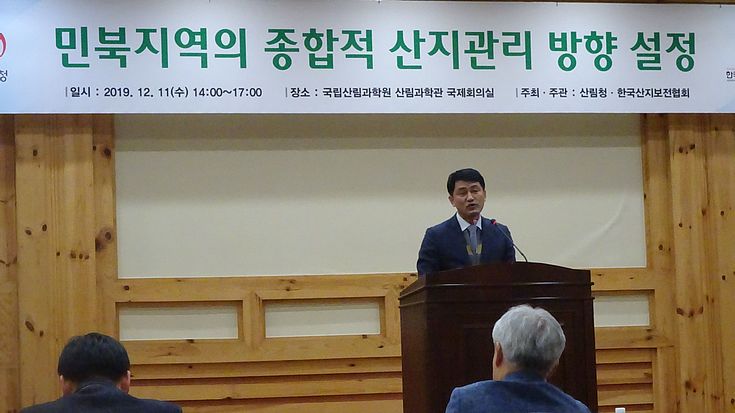
While nature conservation in the DMZ between North and South Korea is a well-known issue, there is less information on the same matter within the Civilian Control Line. The Civilian Control Line is an area located in South Korea and 10km South of the Military Demarcation Line that divides North and South Korea. To spread more awareness and support exchange concerning that issue, the Korea Forest Service and the Korea Forest Conversion Association held a symposium at the National Institute of Forest Science on the 11th of December. The symposium by the title “Set Up of Direction for Mountain Area Management in the Civilian Control Zone” was organized to shine light on the history, current state and future of the mountain areas in the Civilian Control Zone between North and South Korea. The goal of the event was to explore possible plans for cooperation by taking a look at policies and their execution as well as discussing the role and function of local governments and the Korean Forest Service in the future.
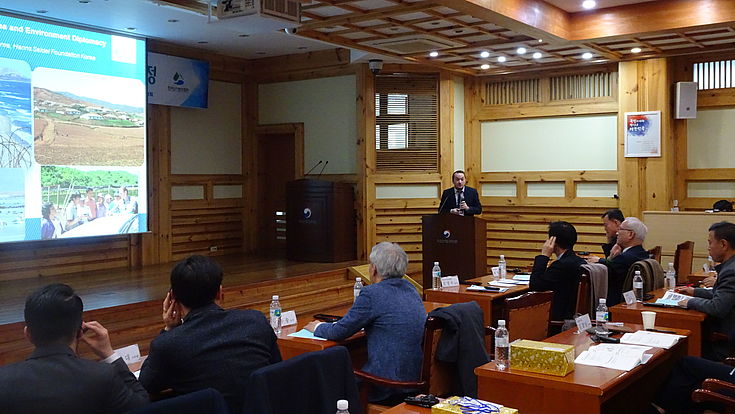
After a short introduction of the presenters and an opening speech by Mr. Park Hyeon of the Korea Forest Conversation Association, three presentations followed by experts of different fields. Mr. Felix Glenk, project manager at the HSF Korea held a presentation of the title “The Inner-German Border and the Projects of Hanns Seidel Foundation in North Korea” in which he introduced HSF and their values and goals as well past and current projects of the Korea Office to conserve nature and biodiversity in North Korea. Additionally, he talked about the German situation and how the former border are between East and West was turned into a zone for nature conservation, which later became the stepping stone for the development of the European Green Belt, and if it can be used as an example for the inner-Korean border area.
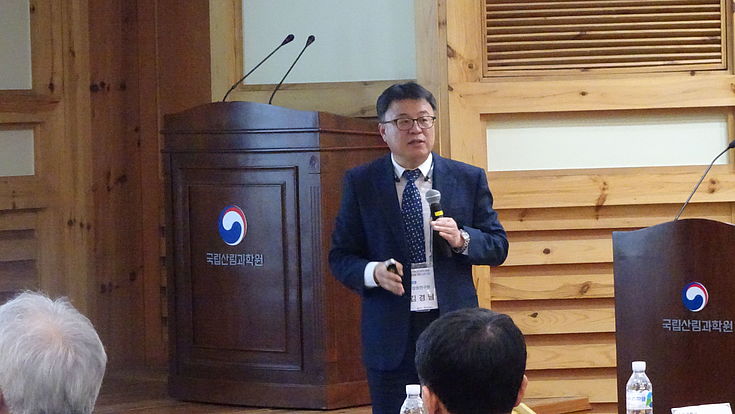
The other presenters of the evening were Mr. Kim Kyeong Nam and Mr. Kim Yeong Bong. Mr. Kim Kyeong Nam, a senior researcher at the research institute of the Kangwon province, held a presentation called “Inter-Korean Cooperation on Exchange and Mountain Areas in the Civilian Control Line”. He gave an introduction on the DMZ and Civilian Control Line (CCL) and talked about Kangwon province’s significance for projects concerning those areas. He also spoke about the problem of too many South Korean ministries competing to develop the CCL and suggested that it should be turned into an international peace park, while he referred to the European Green Belt as an example, and to make the area a zone for peace and prosperity as well as preservation and protection of nature.
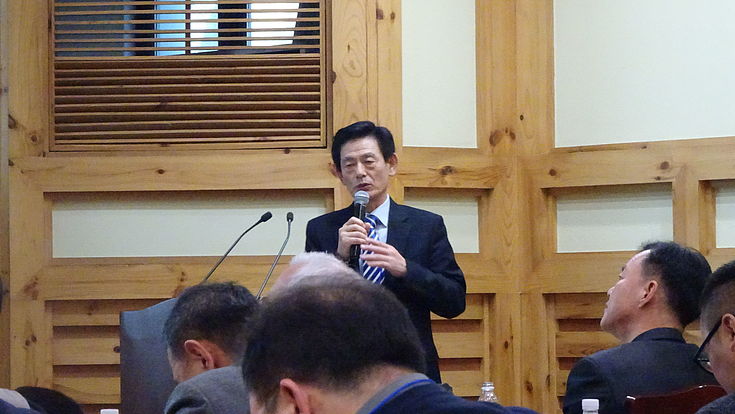
Mr. Kim Yeong Bong on the other hand is the director of the Korean Prosperity Center and held a presentation on the topic “Strategy for the Overall Management of Mountains in the Civilian Control Line Area”. Mr. Kim introduced new statistics and surveys regarding the DMZ and CCL and compared them to show how nature has evolved in those areas. He then went on to compare the Korean situation to Germany and ended his presentation after introducing different proposals by local governments concerning the development of the DMZ and CCL.
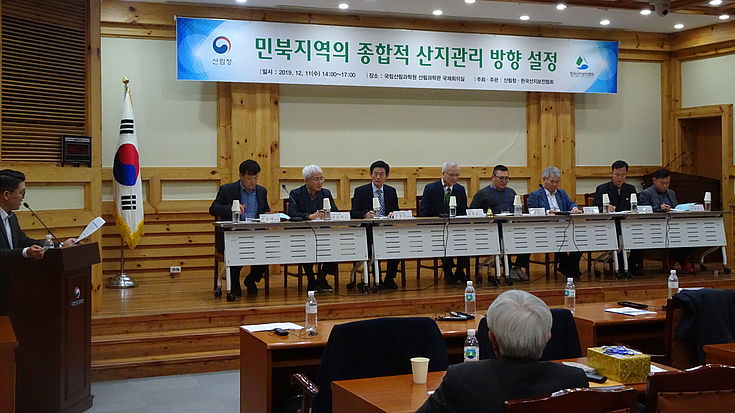
After a short break a discussion panel made up of experts from different fields was introduced. The experts were as follows: Lee Sang Dae of the Korea Forest Service, Dr. Kwon Sun Deok who works for the National Institute of Forest Science, Kim Young Bong of the Korean Prosperity Center, Choi Byeong Seon who also works for the Korea Forest Service, Kim Dong Hyo, the head of the Korean Institute for Ecological Planning, Prof. Cha Doo Song, who works at Kangwon National University, Kim Do Seon of the South Korean Armee, who works for the Forestry Cooperation Center and lastly Dr. Lee Yang Joo of the Gyeonggi Research Institute. Due to time constraint, the eight participants only had time to each make a short statement, but they all agreed on the fact that the DMZ and CCL areas both require special attention to conserve the nature and biodiversity in those parts and that there is a need for specific strategies and plans for the future to manage all projects concerning those areas.
